Name:
1978 Gay Freedom Day
Dates:
June 26, 1978
Primary Resource:
Crawford Wayne Barton Papers
2020 Poster Location:
Market/Hyde
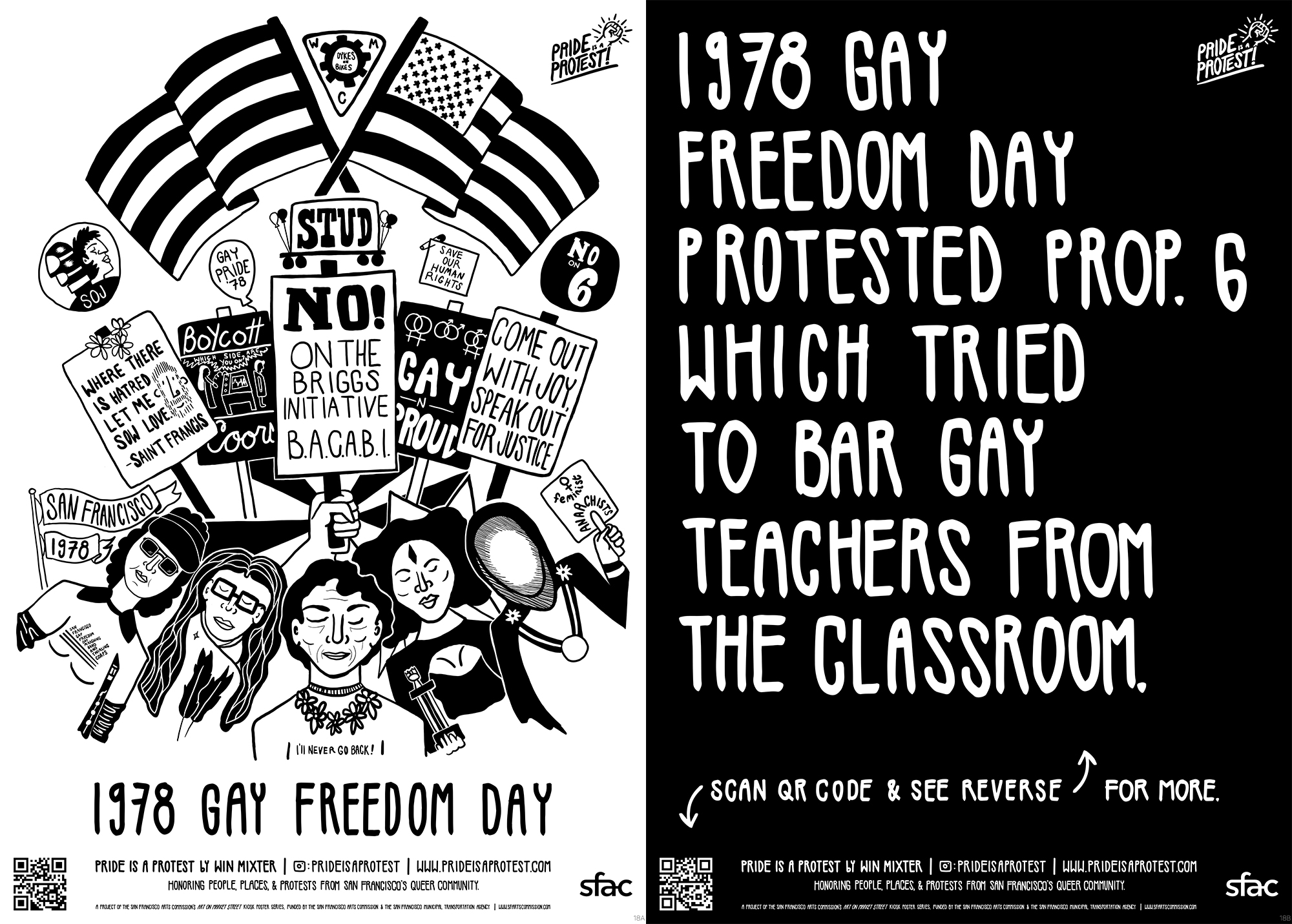

1978 Theme: ‘Come out with joy, speak out for justice.’
1978 Gay Freedom Day was a banner year for the SF Pride celebration, not only because it marked the debut of Gilbert Baker, James McNamara, and Lynn Segerblom‘s twin rainbow flags (now synonymous with the LGBTQIA+ rights movement worldwide), but because it was one of the most visible displays of Pride as a protest.
It featured a central rally against California Proposition 6, a.k.a. The Briggs Initiative, which aimed to bar gay teachers from the classroom. Proponents of Prop 6. used a fear-based smear campaign that focused on outdated notions of queers as sexual perverts and built on the previous year’s anti-LGBTQIA+ movement building by famed bigot and former Miss America runner-up Anita Bryant. The proposition was defeated 58.4% to 41.6% in the 1978 November election.

1978 Gay Freedom Day also featured a newly elected Harvey Milk, California’s first openly gay government official, who rode down Market Street in a convertible wearing a pink triangle arm band and a shirt that read, “I’ll Never Go Back!”
It was the debut of the Gay Freedom Day Marching Band and Twirling Corps, the world’s first LGBTQIA+ marching band. You can see a number of photographs from the band through the years on their Facebook page.
It featured San Francisco legend José Sarria in a cleopatra get-up he adapted from his Aida stage costume, marching nearby the recently-formed Gay American Indians contigent.
It featured a boycott on Coors Brewing, which “put prospective employees through a polygraph test to determine, among other things, if they were homosexual. Not surprisingly, Coors did not have a anti-discrimination policy, and prospective employees discovered to be homosexual were not hired.” Elaine Gay Jarvis took an amazing photograph of one parade reveler dressed in a Coors can to call attention to the boycott.

Paving the way for capitalist expressions in contemporary Pride celebrations, 1978 Gay Freedom Day also featured an early example of a widely documented privately-funded advertising campaign, with the Club San Francisco Baths distributing thousands of branded balloons to parade revelers. They can be seen in many photos from the celebrations.
Notably, this iteration of Gay Freedom Day also featured one of the first documented internal conflicts within the gay rights contingent. Despite securing a permit and permission by parade organizers to participate, Society of Janus—an early pioneer in the leather & BDSM sub-community—was met with opposition and harassment from assimilationist queers who felt that in order to be accepted, gays should diminish their self-expression and conform to the expectations of mainstream society.
Images*
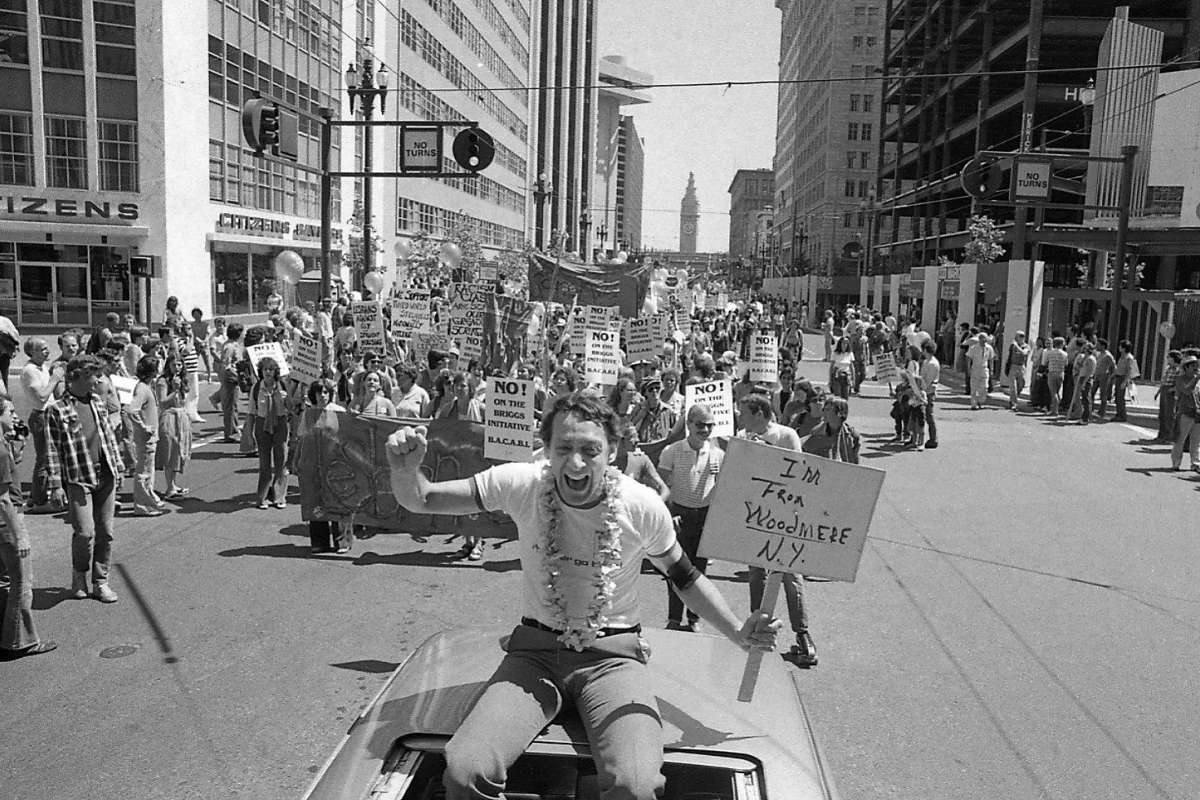

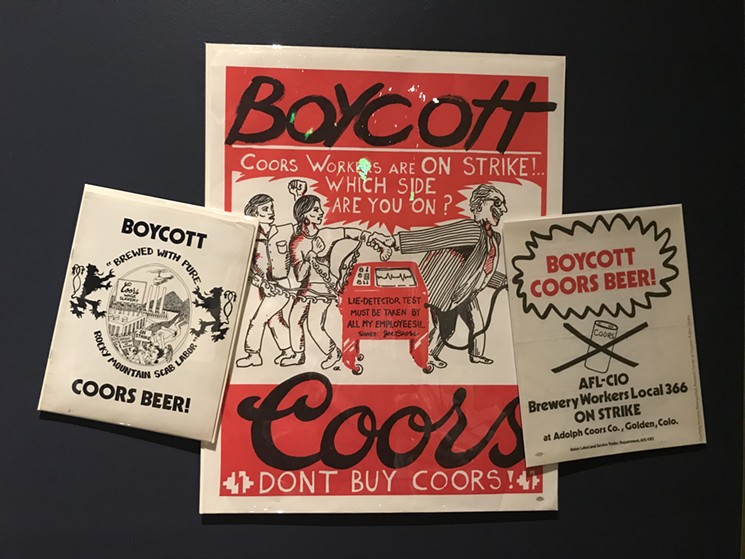
![Del Martin addresses the crowd at Civic Center on Gay Freedom Day 1978, [Crawford Barton papers (1993-11)], Courtesy of Gay, Lesbian, Bisexual Transgender Historical Society.](https://freight.cargo.site/t/original/i/ecca8777d5c376d8f737e675bc7058cda59c15023c852a2c41212e7b6c0f65fd/IMG_3099.jpg)

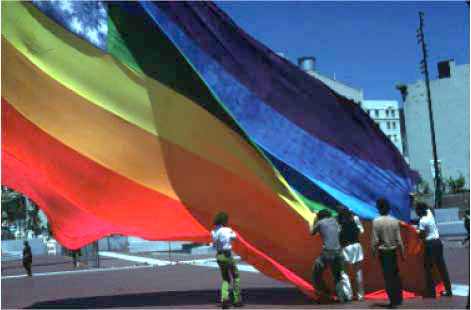
![Radical self-expression on full display at Gay Freedom Day 1978, [Elaine Gay Jarvis Photographs (2018-90)], Courtesy of Gay, Lesbian, Bisexual Transgender Historical Society.](https://freight.cargo.site/t/original/i/331abf8d59da5845bf4d132a242b820e458ce7974a10e964ec8c25783416497e/1523126.x1000.png)
![A group of women with lesbian shirts on protesting Prop 6 at 1978 Gay Freedom Day, [Elaine Gay Jarvis Photographs (2018-90)], Courtesy of Gay, Lesbian, Bisexual Transgender Historical Society.](https://freight.cargo.site/t/original/i/c791735126ef81e65a4bc1e212b9f125f61f5f0aa0c9663169ae2056f1fb96d9/1523131.x1000.png)
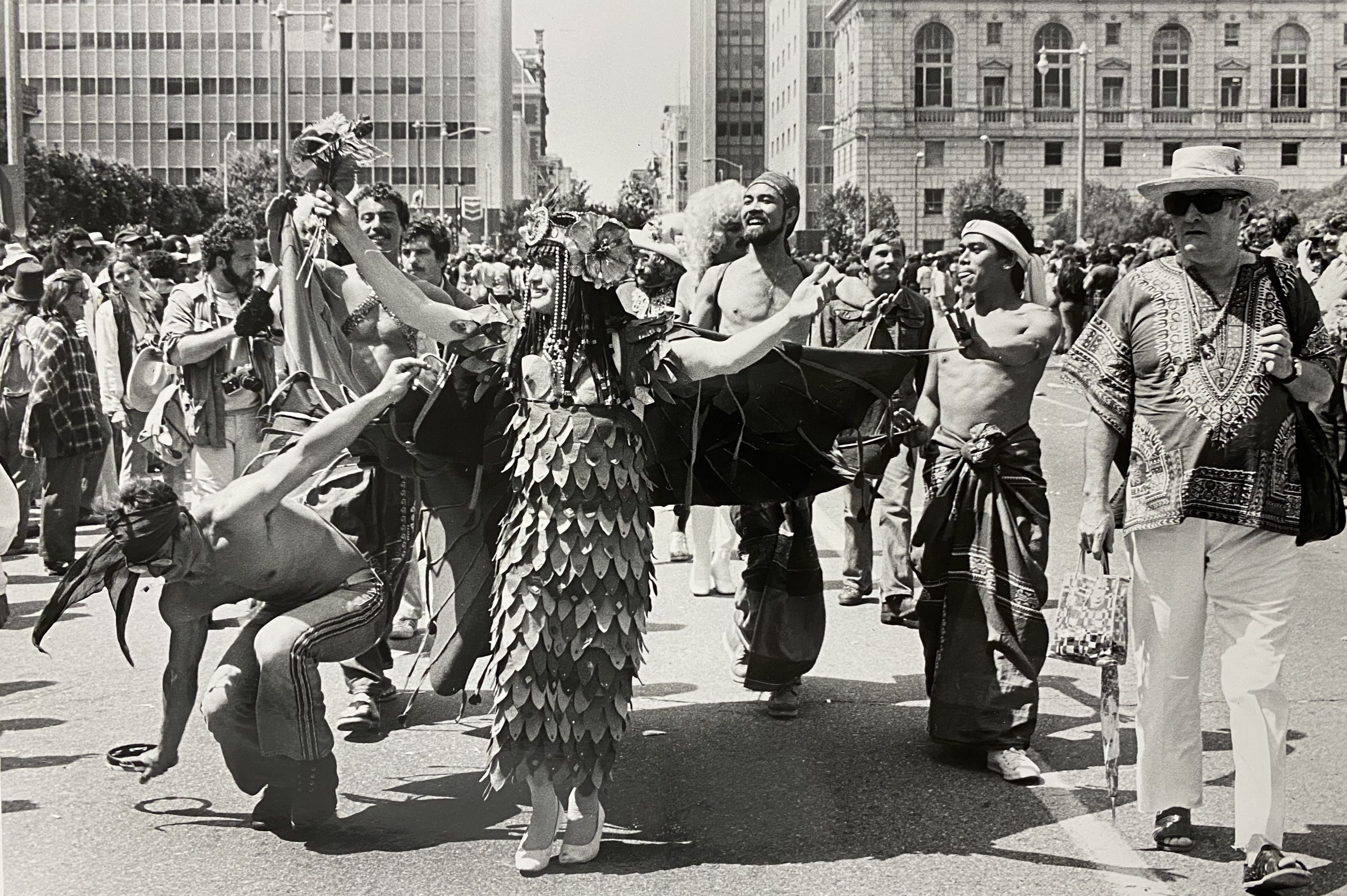
![A member of Gay American Indians marches in the 1978 Gay Freedom Day parade, [Crawford Barton papers (1993-11)], Courtesy of Gay, Lesbian, Bisexual Transgender Historical Society.](https://freight.cargo.site/t/original/i/b39cfd49d474dd7d87555935bacb6d83dac3ed88911123ed217b3bea754d9081/IMG_9332.jpg)
![A protest staged during Gay Freedom Day 1978, [Crawford Barton papers (1993-11)], Courtesy of Gay, Lesbian, Bisexual Transgender Historical Society.](https://freight.cargo.site/t/original/i/17410c412f781833473dbad395c656d1e085f137baaa280d058c6d49894abaa6/IMG_9303.jpg)
![Deaf Gays of SF contingent at 1978 Gay Freedom Day, [Elaine Gay Jarvis Photographs (2018-90)], Courtesy of Gay, Lesbian, Bisexual Transgender Historical Society.](https://freight.cargo.site/t/original/i/2b38815997c00cfd07068c70f93bb6b90129cc2b67f50818efb1ed8752c06c4f/1523144.750x.png)
*Images source indicated by photograph, where available.
Additional Resources
1) 1978 Gay Freedom Day Video by Crawford Barton.
2) Elaine Gay Jarvis Papers—lots of great photographs from 1978 GFD, as well as other years of celebrations.
2) Elaine Gay Jarvis Papers—lots of great photographs from 1978 GFD, as well as other years of celebrations.
3) The LGBT Pride Parade on CaliSphere—Images from the 1977 and 1978 Pride Parades.
4) 1978 GFD Coverage by KPIX Eyewitness News—original local news coverage.
4) 1978 GFD Coverage by KPIX Eyewitness News—original local news coverage.
funded by the San Francisco Arts Commission and the San Francisco Municipal Transportation Agency.
www.sfartscommission.org.